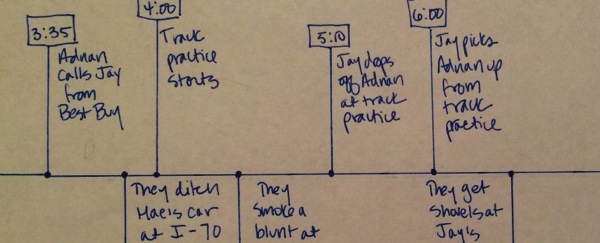
In “Route Talk,” an episode from the first season of Serial, Sarah Koenig and her producer attempt to recreate the state’s timeline of the murder of Hae Min Lee. As I listened to them test what was possible, I was struck by how similar their exercise was to one creative writers perform.
Whenever I move a scene, I have to rearrange the novel’s timeline. If I want a character to be a certain age at the time of a historical event, I have to live with (and keep track of) that birth year. It’s a painfully obvious point, but it can be an inconvenience for other aspects of the story. If I want people to go on vacation at a certain time, because it makes sense for the narrative, that needs to happen at a time of year when those characters would actually take a vacation. I am constantly squaring things up, and I misplace weeks and days with alarming frequency.
Writers have handled the problem of the timeline in many different ways. Joseph Heller handwrote a stunningly detailed outline of Catch-22, complete with a timeline. (It’s worth zooming in.) As freewheeling as Catch-22 seems, Heller kept careful track of details like the number of missions Yossarian had flown as the book progressed.
Read more at Ploughshares.